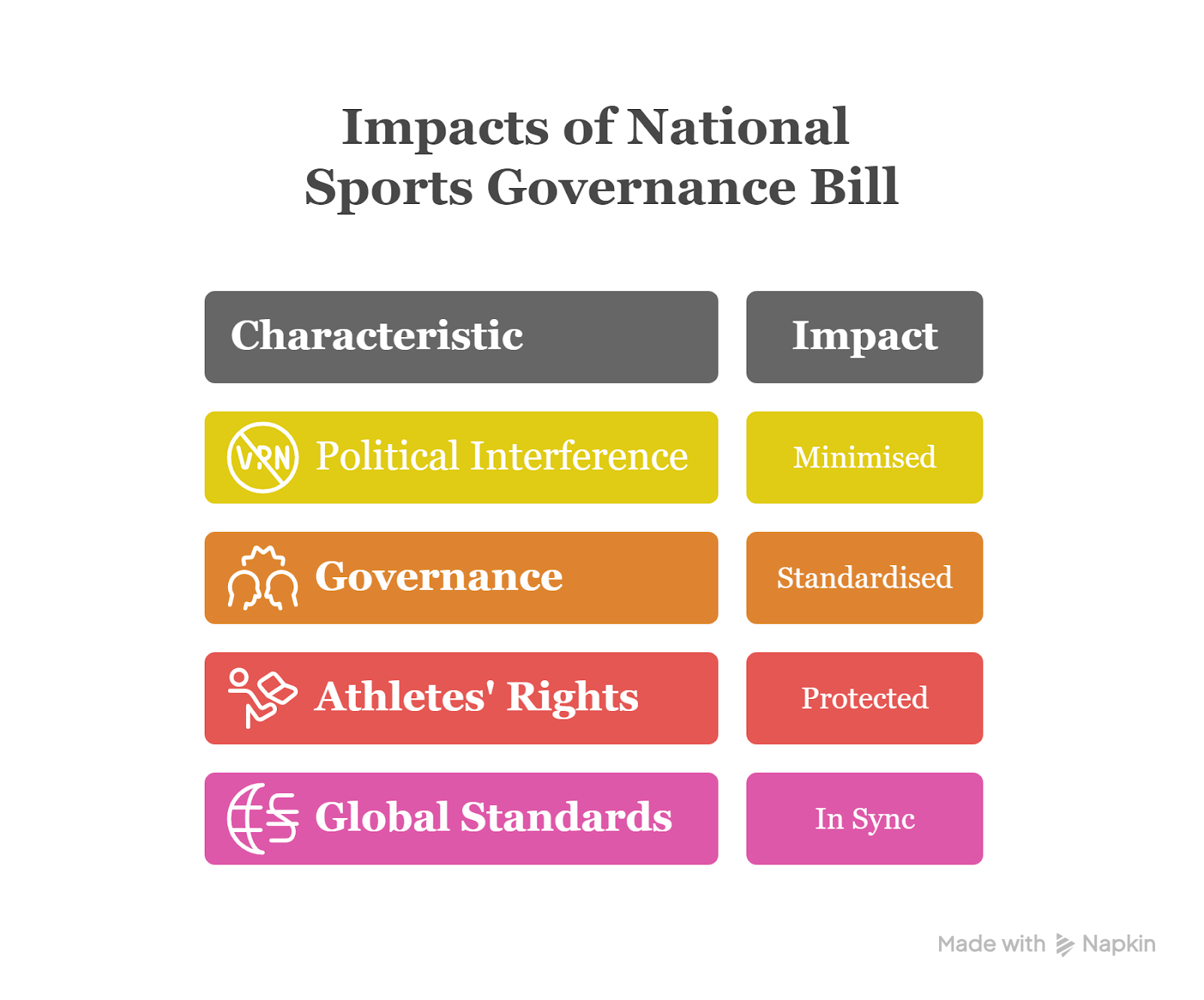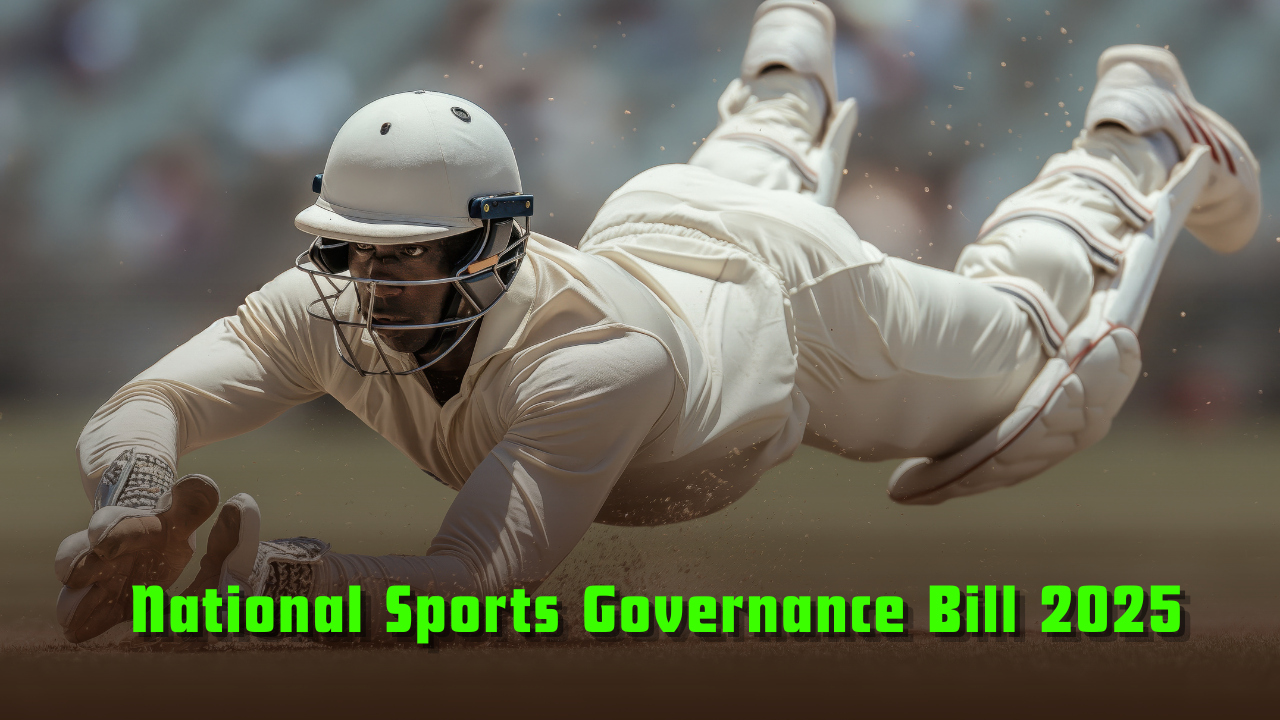Font size:
Print
National Sports Governance Bill 2025
Context: The National Sports Governance Bill, introduced in the Lok Sabha on July 23, 2025, by Union Sports Minister Mansukh Mandaviya, proposes transformative reforms to streamline and regulate the governance of sports in India.
Highlights of the Bill
It introduces two critical structural changes:
- Establishment of a National Sports Board with wide-ranging regulatory powers over sports federations — including the Board of Control for Cricket in India (BCCI).
- Creation of a National Sports Tribunal with powers equivalent to a civil court, to resolve disputes ranging from athlete selection to federation elections.
Why Was the National Sports Governance Bill Necessary?
- Absence of Regulator: The need for a comprehensive sports governance framework has been recognised since the Draft Comprehensive National Sports Policy, 2007, which highlighted the absence of a statutory regulator.
- The proposed National Sports Board would function like the Securities and Exchange Board of India (SEBI), ensuring uniform standards, oversight, and transparency.
- Multiple Drafts: Over the years, multiple drafts of the National Sports Development Bill were considered but never passed.
- The current Bill draws heavily from these earlier drafts while addressing longstanding issues related to governance failures, opaque functioning of sports federations, and judicial interventions.
What Problems in Indian Sports Governance Does the Bill Address?
- In the absence of dedicated legislation, governance in sports has so far relied on the Sports Code, 2011, which lacked statutory backing. This gap led to:
- Frequent judicial interventions in sports administration
- Long-pending litigation over federation elections and governance
- The rise of ad hoc committees running federations
- Lack of transparency in athlete selection and funding decisions
- The new framework aims to reduce the burden on the judiciary, ensure time-bound dispute resolution, and institutionalise governance standards.
How Will the National Sports Tribunal Function?
- The proposed National Sports Tribunal will have the powers of a civil court, adjudicating issues such as: Athlete selection disputes, Federation election challenges and Governance violations by National Sports Federations (NSFs)
- Importantly, appeals from the Tribunal will lie only with the Supreme Court, ensuring fast-tracked resolution.
- The Tribunal structure follows international best practices, such as FIFA’s Dispute Resolution Chamber and the Court of Arbitration for Sport (CAS) model, aiming for a specialised, accessible, and sport-sensitive mechanism.
Will the National Sports Board Be Truly Independent?
- Though similar powers currently lie with the Sports Ministry, the Bill proposes to establish a statutory National Sports Board that will have:
- Its own budget and staffing
-
- Powers to audit and assess NSFs
-
- A mandate to register all affiliated units of NSFs
-
- Authority to set governance and transparency standards
- This shift from ministry-controlled oversight to an autonomous board is expected to increase accountability, information transparency, and public trust in Indian sports governance.

Why Has the Age Limit Been Raised and Term Limits Removed?
- The Bill raises the age limit for sports administrators to 75 and removes term limits, with the justification that international representation requires experience and continuity.
- While this is aimed at allowing Indian officials to hold influential positions in international federations, concerns remain over institutional entrenchment and power consolidation. The challenge will be in ensuring these provisions do not undermine democratic processes within sports bodies.
Will the BCCI Now Come Under Government Regulation?
- The Bill marks a historic shift by proposing to bring the BCCI under the ambit of the law. This is notable because: BCCI has never been formally recognised as an NSF and It has operated autonomously, with its own constitution and election process.
- The Bill could align BCCI’s governance with Olympic sports bodies and open the door for cricket to be part of the Indian Olympic Association (IOA) in light of its inclusion in the upcoming Olympic Games.
- Key changes could include adherence to age and tenure limits, transparency norms, and regulatory scrutiny.
Does the Bill Restrict Athletes from Approaching Courts?
The Bill proposes a structured, sport-specific dispute resolution mechanism:
- Internal resolution within the concerned sports body
- Appeal to the National Sports Tribunal
- Final appeal to the Supreme Court of India
- This mirrors international sports jurisprudence where entities like FIFA mandate resolution only through internal chambers and CAS.
- The goal is to make grievance redressal more specialised, timely, cost-effective, and accessible to athletes, avoiding prolonged and expensive litigation.
Subscribe to our Youtube Channel for more Valuable Content – TheStudyias
Download the App to Subscribe to our Courses – Thestudyias
The Source’s Authority and Ownership of the Article is Claimed By THE STUDY IAS BY MANIKANT SINGH



